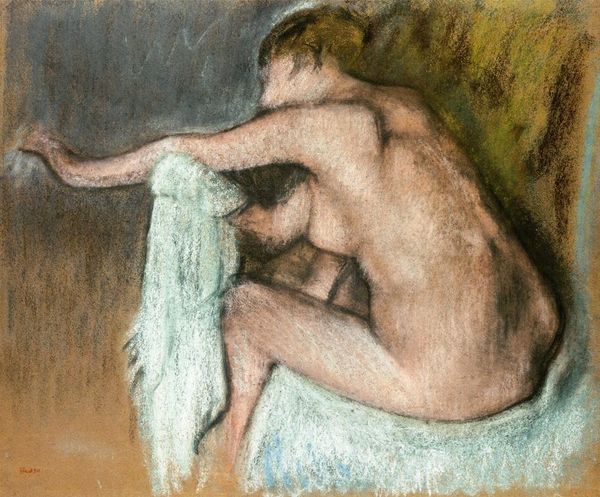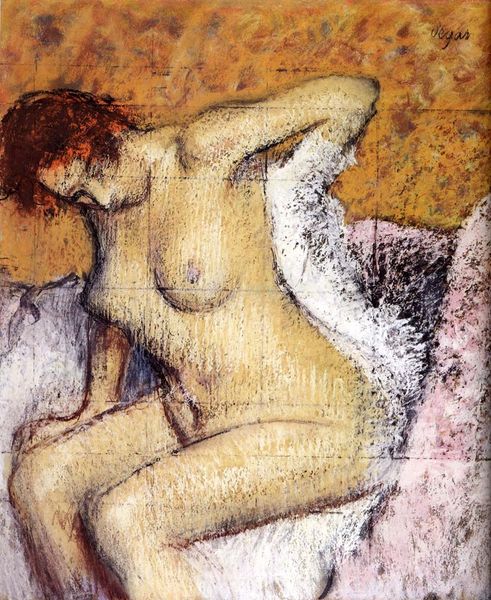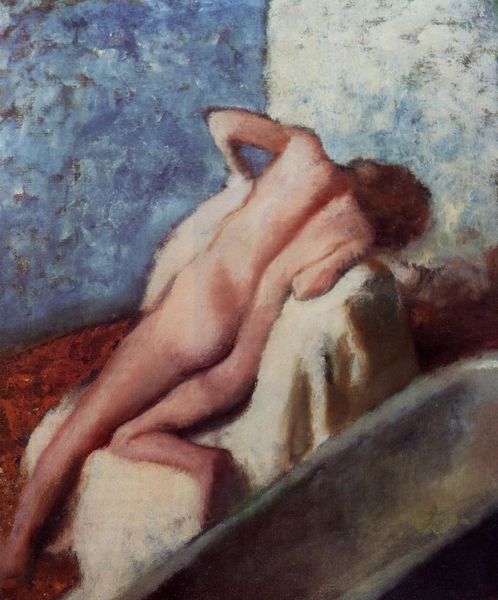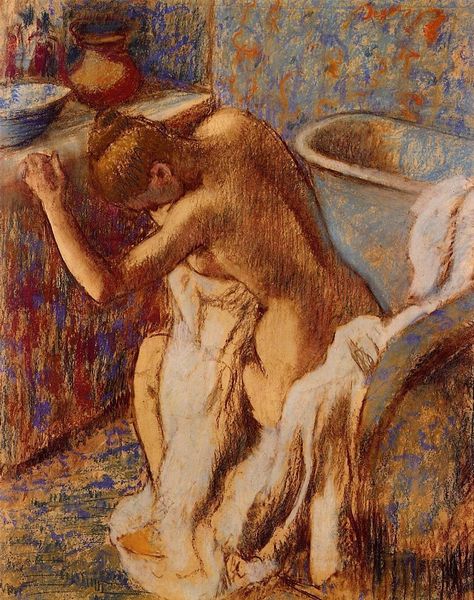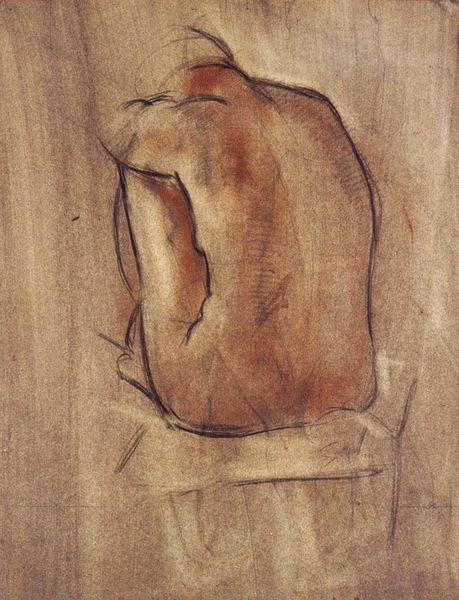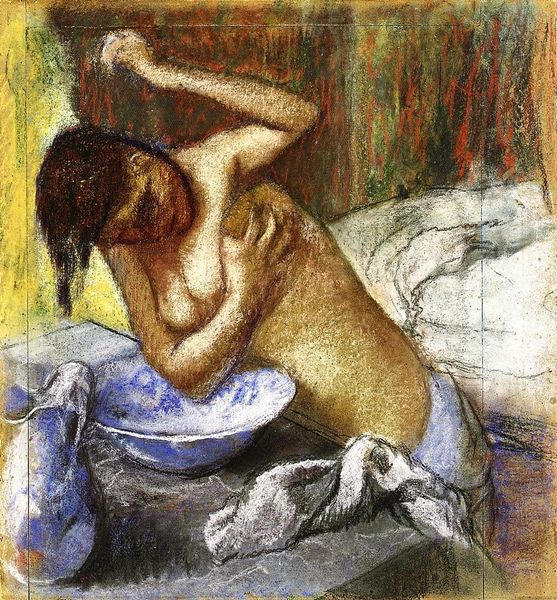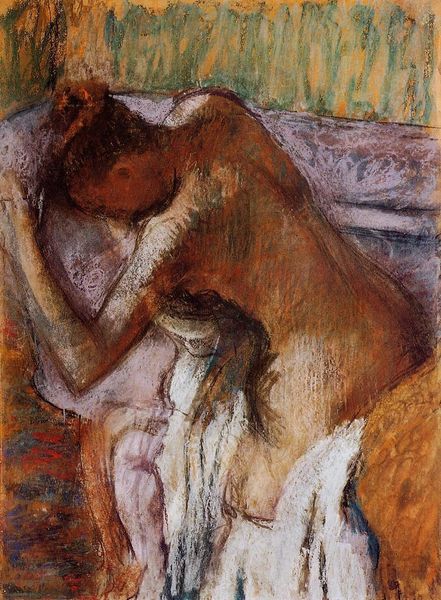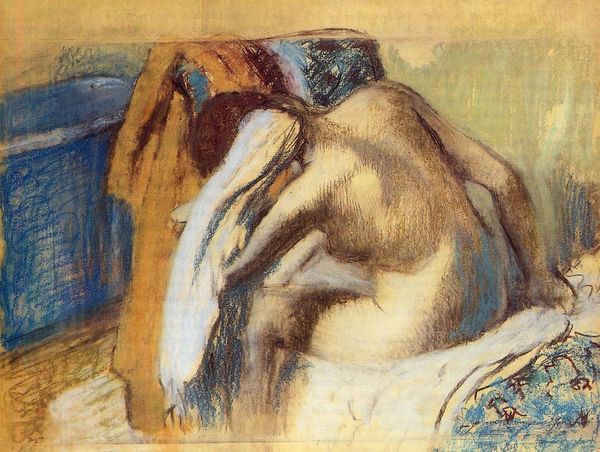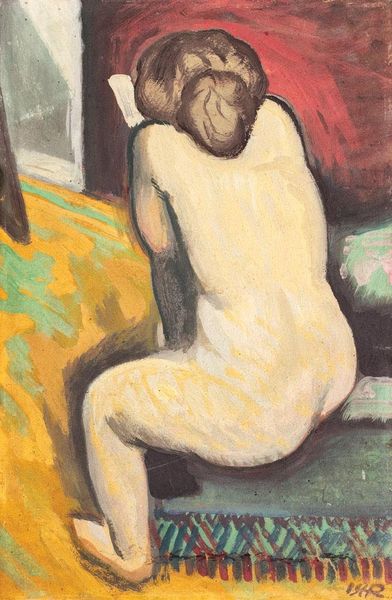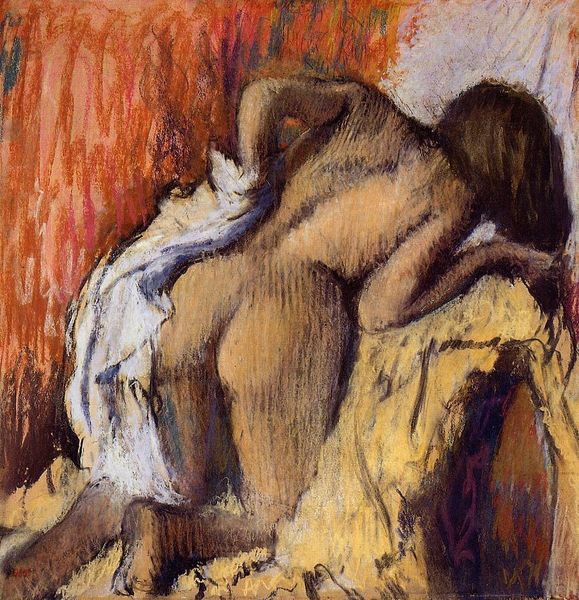
drawing, charcoal, pastel
#
portrait
#
drawing
#
impressionism
#
charcoal drawing
#
figuration
#
possibly oil pastel
#
oil painting
#
female-nude
#
genre-painting
#
charcoal
#
pastel
#
nude
Copyright: Public domain
Editor: Here we have Degas' "The Toilette after the Bath," created around 1890 using charcoal and pastel. It feels incredibly intimate, like catching a private moment. The soft lines and muted colors add to this voyeuristic feeling, don't you think? What stands out to you when you look at it? Curator: You've hit on something crucial. Degas wasn't just depicting a nude; he was exploring the *act* of observing. It's like he's inviting us to be accidental witnesses. The way the light glances off the figure, almost haphazardly, is deliberately casual. Does that inform your understanding of his intent? Editor: It does, a bit. I always struggled with whether it's art or exploitation, I mean where's the line? Curator: That's the delicious tension, isn't it? He's straddling that line, forcing us to consider our own gaze. Is it empathetic or intrusive? Notice the unconventional composition – the cropped figure, the focus on mundane details... It deflects idealized beauty in favor of lived reality, raw and unfiltered. You see how he achieves such feeling from humble tools? Editor: The rawness is palpable, I suppose. Like a stolen glance, and like… art. Is it? It definitely stays with you. Thank you for sharing your point of view! Curator: Absolutely! Remember, the most interesting art often sits in that uncomfortable space, prodding at our preconceptions. I appreciate your keen observations too!
Comments
No comments
Be the first to comment and join the conversation on the ultimate creative platform.

